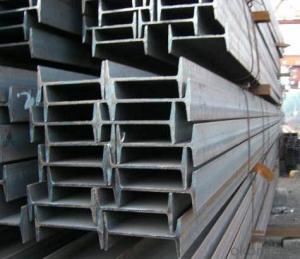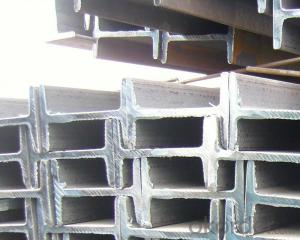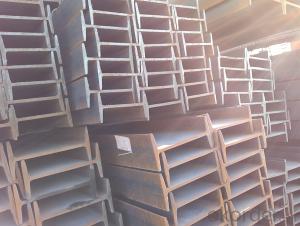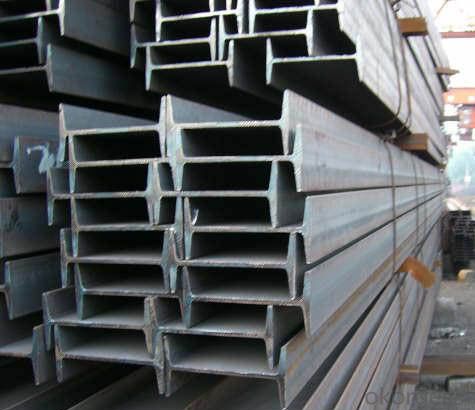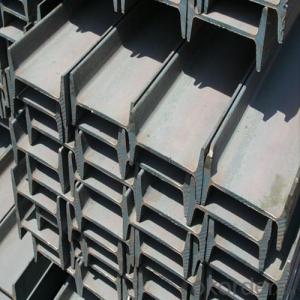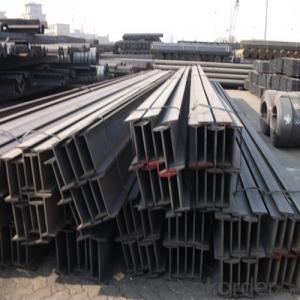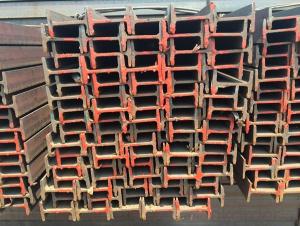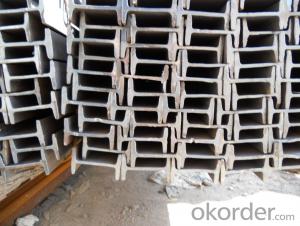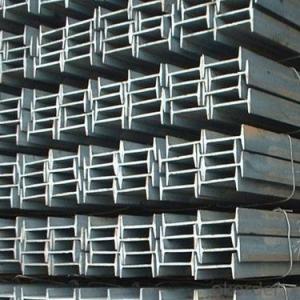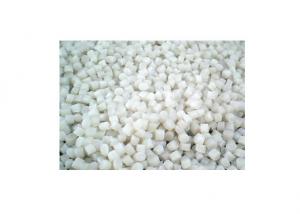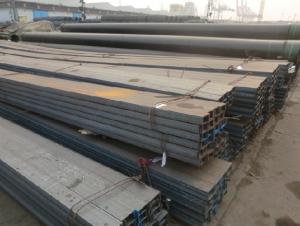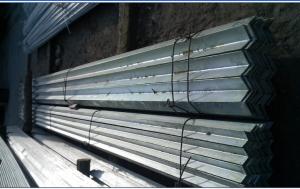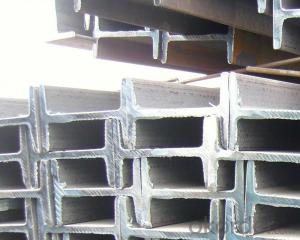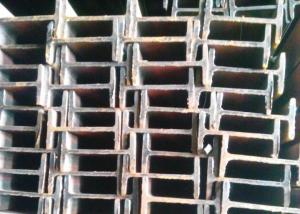European Standard IPE200 with High Quality
- Loading Port:
- Tianjin
- Payment Terms:
- TT or LC
- Min Order Qty:
- 50 m.t
- Supply Capability:
- 15000 m.t/month
OKorder Service Pledge
OKorder Financial Service
You Might Also Like
Product Description of European Standard IPE200 with High Quality:
Specifications of European Standard IPE200 with High Quality:
1.Standard: EN10025
2.Material: S235JR or Equivalent
3.Length: 6m, 12m
4.Size:
Size (mm) | Mass (kg/m) |
| 200*100*5.6 | 22.4 |
Usage & Applications of European Standard IPE200 with High Quality:
Commercial building structure;
Pre-engineered buildings;
Machinery support structures;
Prefabricated structure;
Medium scale bridges.
Packaging & Delivery of European Standard IPE200 with High Quality:
1. Transportation: the goods are delivered by truck from mill to loading port, the maximum quantity can be loaded is around 40MTs by each truck. If the order quantity cannot reach the full truck loaded, the transportation cost per ton will be little higher than full load.
2. With bundles and load in 20 feet/40 feet container, or by bulk cargo, also we could do as customer's request.
3. Marks:
Color mark: There will be color marking on both end of the bundle for the cargo delivered by bulk vessel. That makes it easily to distinguish at the destination port.
Tag mark: There will be tag mark tied up on the bundles. The information usually including supplier logo and name, product name, made in China, shipping marks and other information request by the customer.
If loading by container the marking is not needed, but we will prepare it as customer's request.
FAQ:
Q1: Why buy Materials & Equipment from OKorder.com?
A1: All products offered byOKorder.com are carefully selected from China's most reliable manufacturing enterprises. Through its ISO certifications, OKorder.com adheres to the highest standards and a commitment to supply chain safety and customer satisfaction.
Q2: How do we guarantee the quality of our products?
A2: We have established an advanced quality management system which conducts strict quality tests at every step, from raw materials to the final product. At the same time, we provide extensive follow-up service assurances as required.
Q3: How soon can we receive the product after purchase?
A3: When we receive the advance payment or original LC, we will arrange production. The shipping date is dependent upon the quatity, how many sizes you want and the plan of production, but is typically 1 month to 2 month days from the beginning of production.
Images of European Standard IPE200 with High Quality:
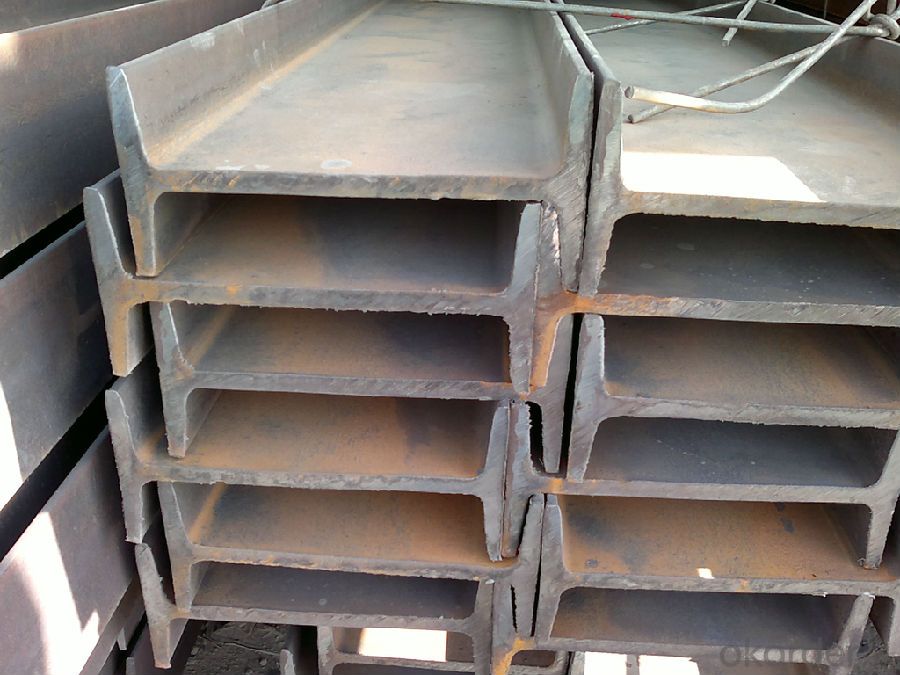
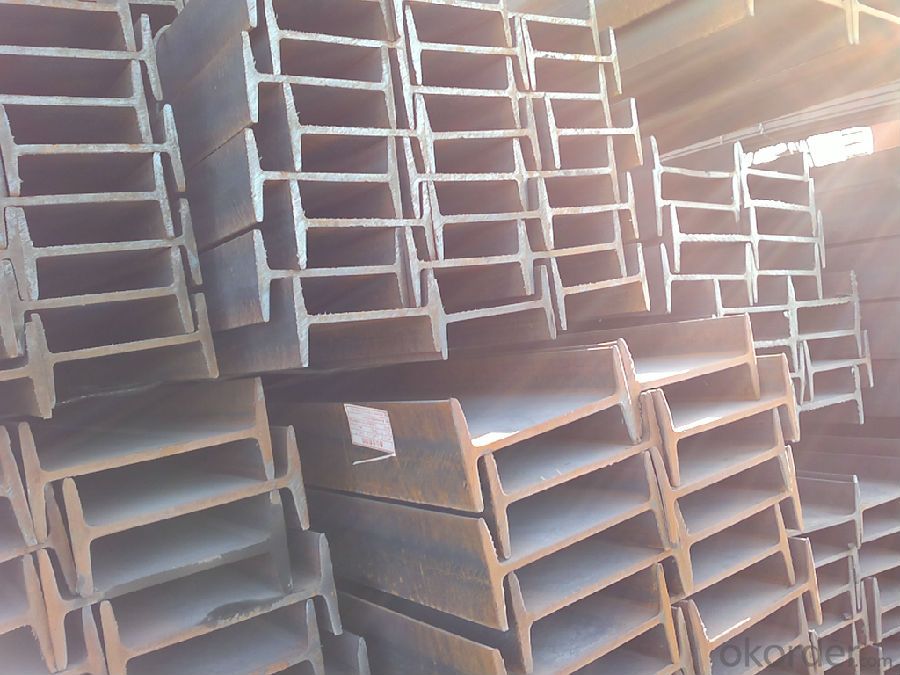
*If you would like to get our price, please inform us the size, standard/material and quantity. Thank you very much for your attention.
- Q: How long is the installation specification for the cantilever platform?
- The feeling should be as much as 1.25 times the cantilever length of the overhanging scaffolding, but actually the overhang is already very long and the anchor is not enough on the floor according to the theoretical value. We have not fixed the steel ring, so we have to pull it by wire rope, and there is skid resistant steel underneath.
- Q: Can steel I-beams be used in theater stage construction?
- Certainly, theater stage construction can incorporate steel I-beams. These I-beams offer robust structural reinforcement, rendering them appropriate for expansive theater stages and platforms. They possess the capacity to endure substantial weights, such as sets, props, and equipment, thereby guaranteeing stage safety and stability. Moreover, steel I-beams can be readily tailored and manufactured to comply with precise design specifications, enabling flexibility in stage construction. Given their enduring nature and extended lifespan, they have gained popularity in theater stage construction as they can withstand the rigors of frequent use and lay a firm groundwork for diverse performances and productions.
- Q: What are the considerations for corrosion protection of steel I-beams in marine environments?
- There are several key factors to keep in mind when it comes to protecting steel I-beams from corrosion in marine environments. These factors are crucial to ensure the beams' longevity and structural integrity since exposure to saltwater and other corrosive elements can greatly accelerate the corrosion process. 1. Material Selection: It is essential to choose the right type of steel for corrosion protection in marine environments. Stainless steel and galvanized steel are commonly used due to their natural resistance to corrosion. Stainless steel contains chromium, which forms a passive protective layer on the surface, preventing the underlying metal from corroding. Galvanized steel is coated with a layer of zinc, which acts as a sacrificial barrier, protecting the steel beneath it from corrosion. 2. Coatings and Paints: The application of coatings or paints specifically designed for marine environments is another effective method of protecting steel I-beams from corrosion. Epoxy coatings, polyurethane paints, or marine-grade coatings can create an additional barrier against saltwater and moisture, preventing direct contact with the steel surface and reducing the risk of corrosion. 3. Cathodic Protection: The implementation of cathodic protection systems can be advantageous for steel I-beams in marine environments. Cathodic protection involves using sacrificial anodes or impressed current systems to provide a protective current that counteracts the natural corrosion process. Sacrificial anodes, typically made of zinc or aluminum, are attached to the steel beams and corrode instead of the beams themselves, sacrificing themselves to protect the underlying steel. 4. Maintenance and Inspection: Regular inspection and maintenance play a critical role in ensuring ongoing corrosion protection for steel I-beams in marine environments. Inspections should be conducted to identify any signs of corrosion, coating damage, or other issues that may compromise the beams' integrity. Prompt repairs or recoating should be carried out as necessary to prevent further corrosion. 5. Design Considerations: Proper design can also contribute to corrosion protection in marine environments. For example, avoiding water traps or ensuring proper drainage can prevent moisture accumulation, which can accelerate corrosion. Additionally, selecting appropriate coatings or materials for connections and fasteners is essential to ensure the entire structure is adequately protected from corrosion. All in all, the considerations for corrosion protection of steel I-beams in marine environments involve choosing suitable materials, applying protective coatings or paints, implementing cathodic protection systems, conducting regular maintenance and inspections, and incorporating corrosion-resistant design features. By addressing these considerations, the risk of corrosion and subsequent structural damage can be minimized, ensuring the longevity and reliability of the steel I-beams.
- Q: What are the considerations for steel I-beam design in corrosive chemicals environments?
- When designing steel I-beams for corrosive chemical environments, there are several important considerations to take into account. Firstly, it is crucial to select the right type of steel that offers excellent resistance to corrosion. Stainless steel grades, such as 316 or 2205, are commonly chosen for their high corrosion resistance properties. These steels contain alloying elements like chromium and molybdenum, which provide a protective layer against corrosive chemicals. Secondly, the design of the I-beam should incorporate proper protection measures to prevent direct contact between the steel and corrosive chemicals. This can be achieved by using protective coatings, such as epoxy or polyurethane paints, that act as a barrier between the steel and the corrosive environment. Additionally, the use of sacrificial anodes or cathodic protection systems can be employed to further safeguard the steel against corrosion. Another important consideration is the structural integrity of the I-beam. Corrosion can weaken the steel over time, leading to a decrease in load carrying capacity. It is essential to factor in the potential loss of strength due to corrosion and incorporate appropriate safety margins in the design. Regular inspections and maintenance should also be conducted to detect any signs of corrosion and address them promptly. Furthermore, the design should account for the specific type of corrosive chemical present in the environment. Different chemicals have varying degrees of corrosiveness, and some may require additional measures such as specialized coatings or materials to ensure long-term durability. Lastly, it is crucial to adhere to relevant industry standards and guidelines for designing steel structures in corrosive environments. Standards like the American Institute of Steel Construction (AISC) provide guidance on material selection, design considerations, and construction practices specific to corrosive environments. In summary, the considerations for steel I-beam design in corrosive chemical environments involve selecting the appropriate corrosion-resistant steel, implementing protective measures, accounting for potential loss of strength due to corrosion, considering the specific corrosive chemicals present, and following industry standards and guidelines. By addressing these factors, the design can ensure the longevity and safety of the steel I-beams in corrosive environments.
- Q: Can steel I-beams be used in earthquake-resistant building designs?
- Certainly, earthquake-resistant building designs can incorporate steel I-beams. Steel, being a highly durable and strong material, offers better resistance to seismic forces compared to other materials. This is why I-beams are widely used in construction, as they have excellent load-bearing capabilities and can resist bending and twisting. Engineers and architects employ various design strategies to ensure earthquake resistance. These techniques may include base isolation or damping systems, which absorb and dissipate the energy generated by earthquakes. Steel I-beams can be integrated into these designs to provide structural support and stability. Another advantage of steel I-beams is their flexibility and ductility. During an earthquake, they can absorb and redistribute forces, preventing building collapse. Moreover, steel's high strength-to-weight ratio allows for lighter and more efficient building designs. However, it is crucial to consider a holistic approach when designing earthquake-resistant buildings. This includes considering all aspects of design, such as the foundation, connections, and overall structural system. Proper engineering analysis and design must be conducted to ensure the steel I-beams are appropriately sized and positioned to withstand anticipated seismic forces. In conclusion, the use of steel I-beams in earthquake-resistant building designs can greatly enhance the structural integrity and safety of a building during seismic events. When integrated and designed properly in conjunction with other seismic mitigation techniques, steel I-beams can play a significant role in ensuring the building's resilience.
- Q: How do you calculate the moment due to torsion in a steel I-beam?
- To determine the moment resulting from torsion in a steel I-beam, one must take into account the beam's geometry and the applied torsional load. This moment is a measure of the rotational force acting on the beam. To begin, the torque applied to the beam must be calculated. This torque is obtained by multiplying the applied force by the distance from the center of the beam to the point where the force is applied. Next, the polar moment of inertia (J) of the beam's cross-section should be calculated. This measure quantifies the beam's resistance to torsional deformation. The I-beam's specific cross-sectional formula can be used for this calculation. Once the torque and the polar moment of inertia are determined, the moment due to torsion can be calculated using the formula: M = T / (J * R) Here, M represents the moment due to torsion, T represents the torque, J represents the polar moment of inertia, and R represents the distance from the center of the beam to the outermost fiber. It is important to note that the calculated moment due to torsion represents the maximum twisting moment experienced by the beam. This value is crucial for evaluating the beam's structural integrity and design, ensuring it can withstand the applied torsional load. Furthermore, it is vital to verify if the calculated moment due to torsion falls within the permissible limits stipulated by relevant design codes and standards. These limits guarantee the safety and reliability of the steel I-beam under torsional loads. In conclusion, the calculation of the moment due to torsion in a steel I-beam involves determining the applied torque, calculating the polar moment of inertia, and applying the appropriate formula to obtain the moment due to torsion. This calculation aids in evaluating the beam's ability to withstand rotational forces and ensures its structural integrity.
- Q: Can steel I-beams be used for theater stage supports?
- The utilization of steel I-beams for theater stage supports is indeed possible. These I-beams are frequently employed in construction owing to their robustness and capacity to bear heavy loads. They serve as a dependable and sturdy support system for various structures, including theater stages. By strategically positioning and securing the I-beams to the stage floor, adequate support can be provided for heavy set pieces, equipment, and performers. Moreover, customization options are available to ensure that the steel I-beams meet the specific requirements of the theater stage design, including load capacity and safety standards. In summary, the durability, versatility, and ability to withstand the demands of theatrical productions make steel I-beams a favored choice for theater stage supports.
- Q: Can steel I-beams be used for educational institutions?
- Yes, steel I-beams can be used for educational institutions. Steel I-beams are commonly used in construction due to their strength, durability, and load-bearing capabilities. They provide structural support, especially in large buildings or areas with wide spans, making them suitable for educational institutions such as schools, colleges, and universities. Steel I-beams can be used in various applications within educational institutions. They are commonly used in the construction of gymnasiums, auditoriums, libraries, and other large spaces that require open floor plans and high ceilings. The strength of steel I-beams allows for the creation of large, open spaces without the need for excessive columns or support structures. In addition, steel I-beams can also be used in the construction of classrooms, laboratories, and other educational facilities. They provide the necessary structural support for the building while allowing for flexibility in the layout and design of the interior spaces. Steel I-beams can be easily integrated with other construction materials, such as concrete or wood, to create a safe and functional learning environment. Furthermore, steel I-beams offer several advantages for educational institutions. They are fire-resistant and can withstand extreme weather conditions, providing a safe and secure environment for students and staff. Steel is also a sustainable and environmentally friendly material, as it can be recycled and reused. This aligns with the increasing focus on sustainability and green building practices in educational institutions. Overall, steel I-beams are a viable option for the construction of educational institutions. Their strength, durability, and versatility make them suitable for a wide range of applications within these facilities.
- Q: Can steel I-beams be used for military structures?
- Indeed, military structures can utilize steel I-beams. Given their exceptional strength and durability, steel I-beams find widespread use in construction. These attributes render them suitable for numerous military applications, including barracks, hangars, command centers, and other infrastructure. With their ability to provide structural stability and endure heavy loads, steel I-beams prove ideal for military structures that must withstand extreme weather conditions or potential attacks. Moreover, the simple fabrication and assembly of steel I-beams allow for swift deployment of military structures in diverse locations.
- Q: What are the different methods of reinforcing steel I-beams?
- There are several methods of reinforcing steel I-beams, including adding additional steel plates or angles to the flanges, using steel channels or sections as stiffeners, welding additional steel plates or angles to the web, or incorporating carbon fiber reinforced polymer (CFRP) strips or sheets. These methods help increase the load-carrying capacity, stiffness, and durability of the I-beams, making them suitable for various structural applications.
Send your message to us
European Standard IPE200 with High Quality
- Loading Port:
- Tianjin
- Payment Terms:
- TT or LC
- Min Order Qty:
- 50 m.t
- Supply Capability:
- 15000 m.t/month
OKorder Service Pledge
OKorder Financial Service
Similar products
Hot products
Hot Searches
Related keywords
